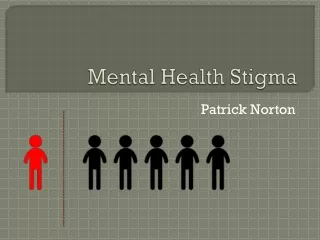The Impact Of Cost And Stigma On Mental Healthcare Access: A Look At Claim Statistics

Table of Contents
The Crushing Weight of Cost: Financial Barriers to Mental Healthcare
The financial burden associated with mental healthcare is a significant obstacle for many. High costs directly impact access and contribute to delayed or forgone treatment, as reflected in claim statistics.
High Out-of-Pocket Expenses and Insurance Coverage Gaps
Many insurance plans offer inadequate coverage for mental health services, resulting in substantial out-of-pocket expenses. High deductibles, co-pays, and limited sessions covered per year create a significant financial barrier. Claim data consistently reveals the average cost of therapy sessions exceeding $150, with medication costs adding another layer of expense. For low-income individuals and families, these costs can be insurmountable, forcing them to forgo necessary care.
- High deductibles deter preventative care: Individuals avoid seeking help until their conditions worsen, leading to more expensive treatments later.
- Limited network providers restrict choices: Patients may be forced to accept less convenient or less suitable providers due to limited in-network options.
- Medication costs can be prohibitive: The cost of prescription medications for mental health conditions can be substantial, especially for long-term treatment.
- Lack of affordable mental health services in underserved areas: Geographic location significantly impacts access, with many rural and low-income communities lacking affordable mental healthcare options.
The Underinsurance Crisis and its Impact on Claim Statistics
Underinsurance, where individuals have minimal coverage or high out-of-pocket costs, exacerbates the problem. Claim data shows a strong correlation between underinsurance and untreated mental health conditions. This often results in a reliance on more expensive emergency room visits for mental health crises.
- Higher rates of untreated conditions among underinsured individuals: Lack of affordable access leads to delayed or avoided treatment, worsening symptoms and outcomes.
- Increased utilization of crisis services due to lack of preventative care: Individuals only seek help when in a severe crisis, leading to higher healthcare costs overall.
- Higher overall healthcare costs due to delayed treatment: Untreated mental health conditions can lead to physical health problems, escalating the overall cost of care.
The Persistent Shadow of Stigma: Societal Barriers to Seeking Help
Beyond the financial hurdles, the pervasive stigma surrounding mental illness significantly impacts help-seeking behavior. This stigma is reflected in claim statistics demonstrating lower utilization rates compared to physical health services.
The Fear of Judgment and Social Isolation
Societal misconceptions and stereotypes surrounding mental health create a climate of fear and judgment. Individuals worry about the potential consequences of disclosing their mental health struggles, including job loss, social isolation, or damage to their reputation. Social media, while offering support networks, can also amplify negative stereotypes and exacerbate feelings of shame.
- Fear of losing employment or social standing: This fear often prevents individuals from seeking professional help or disclosing their condition to employers or colleagues.
- Reluctance to disclose mental health concerns to family and friends: Stigma within families and social circles can create barriers to support and understanding.
- Hesitation to seek professional help due to perceived weakness or shame: The belief that mental illness is a sign of personal failure often prevents people from seeking treatment.
Stigma's Reflection in Claim Data: Low Utilization Rates and Treatment Gaps
Claim statistics clearly show lower utilization rates for mental health services compared to physical health services. This disparity is further exacerbated by demographic factors; access to care varies significantly across race, ethnicity, and socioeconomic status. Delayed or inadequate treatment, a direct consequence of stigma, results in poorer outcomes and increased healthcare costs in the long run.
- Lower rates of diagnosis and treatment for certain mental health conditions: Certain conditions may carry a greater social stigma, leading to underdiagnosis and untreated cases.
- Disparities in access to care based on race, ethnicity, and socioeconomic status: Marginalized communities often face additional barriers to access, reinforcing health inequalities.
- Increased risk of relapse and worsening symptoms due to delayed treatment: Avoiding treatment due to stigma can lead to chronic conditions and increased healthcare utilization.
Addressing the Challenges: Potential Solutions and Policy Recommendations
Addressing the impact of cost and stigma on mental healthcare access requires a multi-pronged approach. Increasing insurance coverage for mental health services, mirroring coverage for physical health, is crucial. Expanding and improving the Affordable Care Act (ACA) to include more comprehensive mental health benefits is essential. Further, significant government funding for mental health initiatives and programs is necessary to broaden access to affordable care. Public awareness campaigns to combat stigma and promote help-seeking behavior are equally important. Finally, we need increased training for healthcare professionals in mental health, ensuring competent and compassionate care.
Conclusion: Overcoming the Barriers to Mental Healthcare Access
In conclusion, cost and stigma remain significant barriers to mental healthcare access. Claim statistics paint a stark picture of low utilization rates, delayed treatment, and stark disparities in care. Addressing both the financial and societal obstacles is paramount to improving mental health outcomes. We must advocate for policies and initiatives that reduce the impact of cost and stigma on mental healthcare access. We need to demand better insurance coverage, increased funding for mental health services, and a cultural shift that prioritizes mental well-being. Let's work together to break down these barriers and ensure everyone has access to the crucial mental healthcare they need.

Featured Posts
-
 Ukraine And U S Forge Economic Partnership On Rare Earth Minerals
May 03, 2025
Ukraine And U S Forge Economic Partnership On Rare Earth Minerals
May 03, 2025 -
 Fortnite Wwe Skins Get Cody Rhodes And The Undertaker Now
May 03, 2025
Fortnite Wwe Skins Get Cody Rhodes And The Undertaker Now
May 03, 2025 -
 Exploring This Country History Culture And Travel
May 03, 2025
Exploring This Country History Culture And Travel
May 03, 2025 -
 Christen Se Impone En La Vuelta Ciclista A La Region De Murcia
May 03, 2025
Christen Se Impone En La Vuelta Ciclista A La Region De Murcia
May 03, 2025 -
 Zakharova Prokommentirovala Otnosheniya Emmanuelya I Brizhit Makron
May 03, 2025
Zakharova Prokommentirovala Otnosheniya Emmanuelya I Brizhit Makron
May 03, 2025
